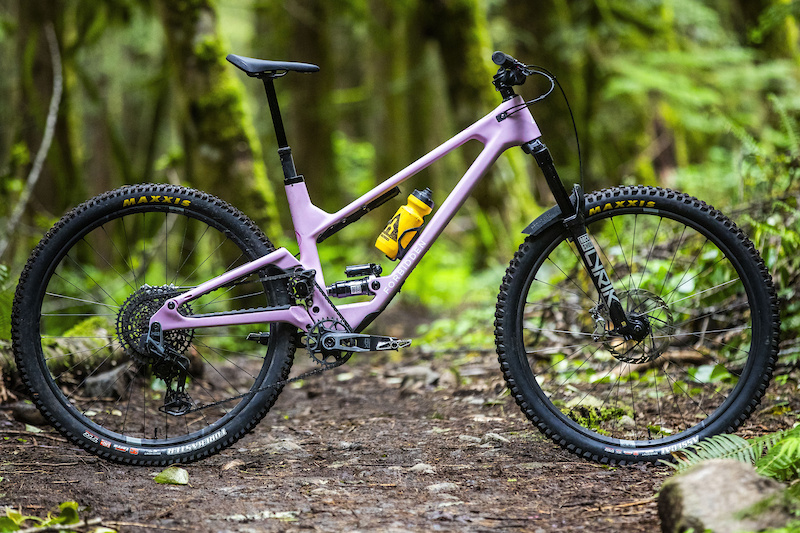The Druid is as equally easy to ride as it is hard to define.
130mm trail bikes tend to come in different flavors and are one of the categories that offer the most genuine variety. On one end of the spectrum, you have the Canyon Neuron, which is alive almost to a fault. It’s light, responsive and sharp. Then you have your Commencal Tempo and Transition Smugglers, which, although the geometry is similar to the Neuron, are a bit more trail-focused and have suspension that feels a bit less about efficiency and a bit more about coping with big hits. The Druid makes those descending-focused trail bikes feel thoroughly undergunned.
The long rear end, the slacker, higher front and the 10mm longer fork mean it can hit things unbelievably hard and offers stability at speed that was as impressive as it was eye-widening. The suspension plays a huge part in this, too. It constantly had me asking a question – is this the best descending 130mm bike I have ever ridden, or a 150mm travel bike that just so happens to have less travel? At some point, the numbers become arbitrary
It’s remarkably stable while also being easy to maneuver with small body weight adjustments. I make no secret that I typically enjoy the high-yet-weighted fronts delivered by this style of geometry. It feels like you just have so much of your weight being placed onto the axles from your feet, and then you can add to that with your hands to affect the bike. It gives a bike that takes high-speed sections in its stride while also being fun and agile when on trails of less gradient. The geometry combines with stiffness well too. It’s a bike you can really drive in turns, and there is absolutely adequate stiffness to do that, while never feeling overly harsh.
It’s not perfect, of course. While everything about this bike enables you to feel you can go as fast as you want, what you do when you get there is a bit more nuanced. Firstly, the shock is damped enough, but perhaps only just. I think for heavier riders, or riders who really charge, they might find the compression on the light side. I enjoyed where it took me in the travel and it offers an impressive mix of tracking, support and bottom out, but I sometimes felt like I got through the stroke a bit quickly, which had a tendency to mean the bike felt like it got bullied by the trail. However, this tended to happen on trails that you wouldn’t expect to ride a bike with this amount of travel that is so light down, and that shouldn’t be overlooked.
The axle path is solely rearward, meaning that hangups are basically non-existent. The tracking is sublime for 130mm, and it makes you realize that travel is just a number. Sometimes, when riding high-pivot bikes, you can hit the inflection point (where the axle path goes from rearward to forward) and it can deliver stern hangups, or feel like your weight shifts forward in certain situations. I wonder if, in some ways, limiting the travel of the Druid to 130mm meant they could avoid this altogether and, in some ways, give a better all-around performance.
Secondly, I do know that if I bought it, it would see some changes immediately: a bigger front rotor and probably thicker casing tires with a bigger tread on the rear. I would love to see Forbidden offer some divergence in their bikes, maybe something like the BC-editions that Rocky sometimes does.
The Druid isn’t a bike for somebody who is after a bit more travel or extra comfort for their XC rides. It’s for people who want to make trail and enduro trails a bit more lively while not smothering all the life out of them. There is a narrow band of trails where this is the absolute best bike, and truthfully, it’s easy to get distracted by bigger, badder trails here in Squamish. Should you happen to find yourself on them, you will be able to ride this down absolutely anything, and it’s no surprise to say it can feel overwhelmed, because the geometry and suspension write checks that the 130mm of rear wheel travel and small fork can sometimes find it hard to cash.
This bike is as good as it is, but it has to be defined.

